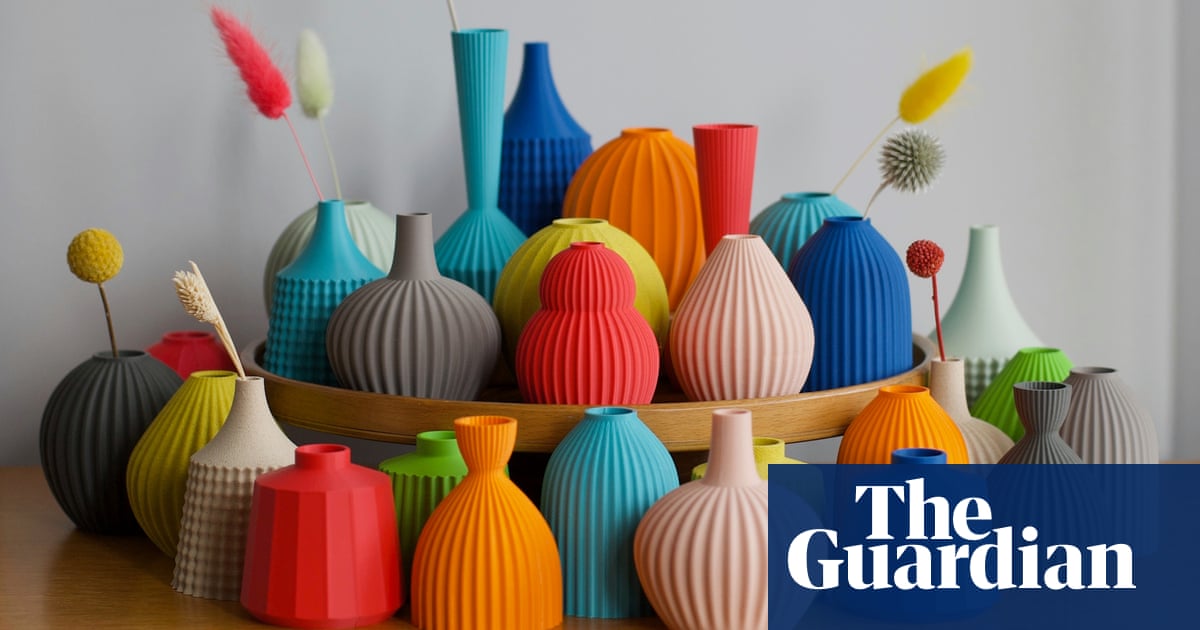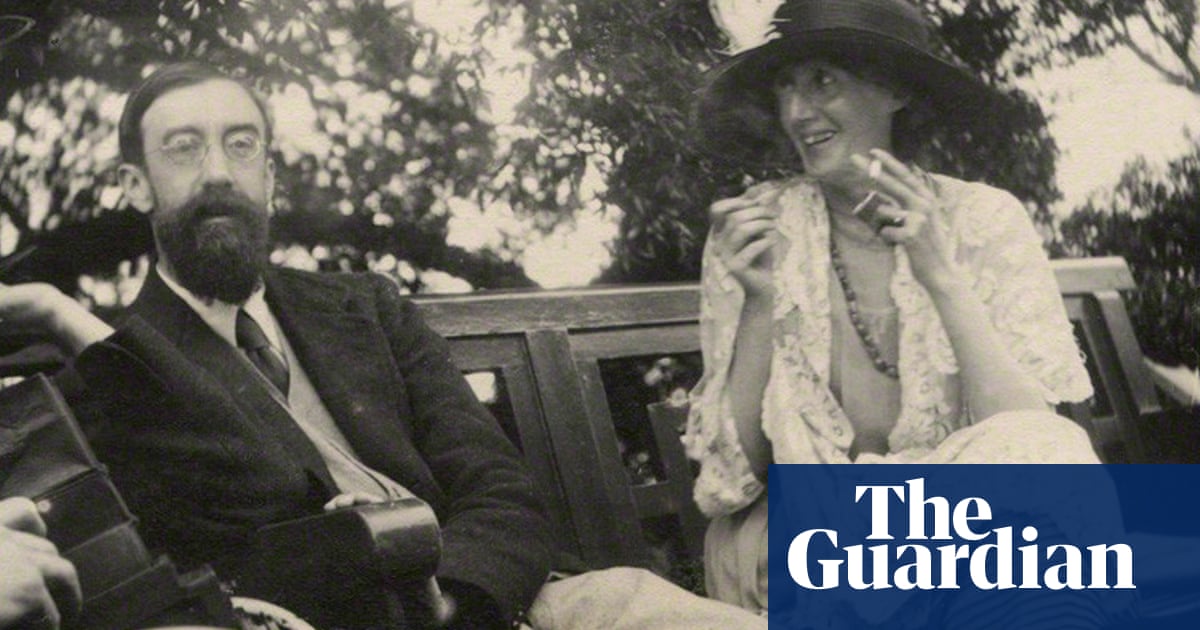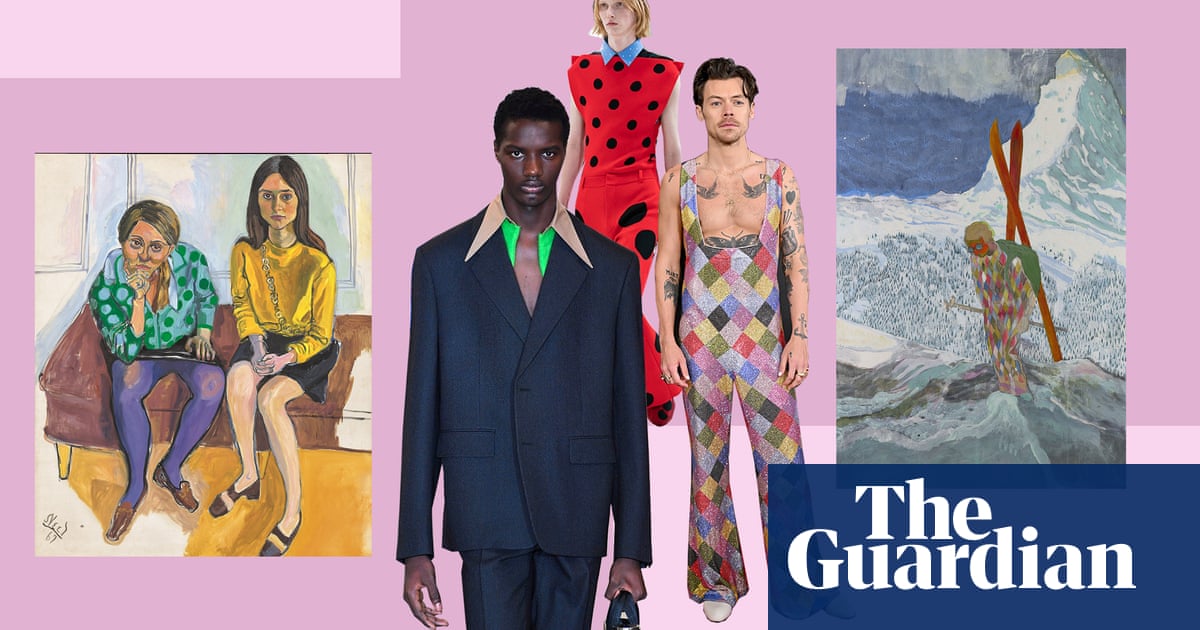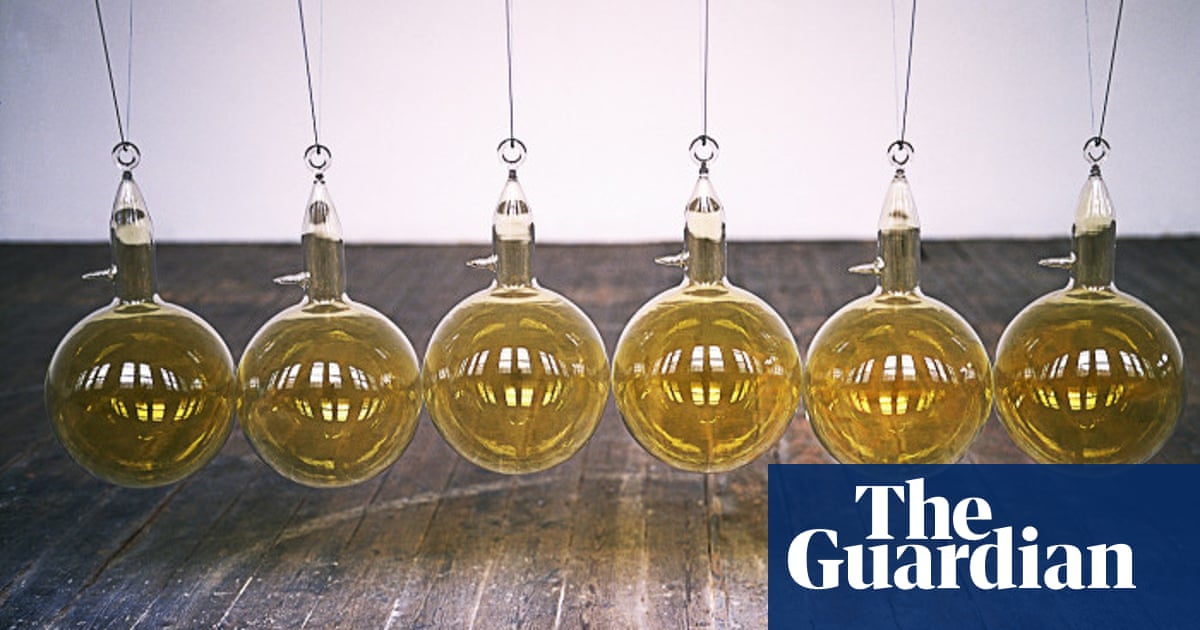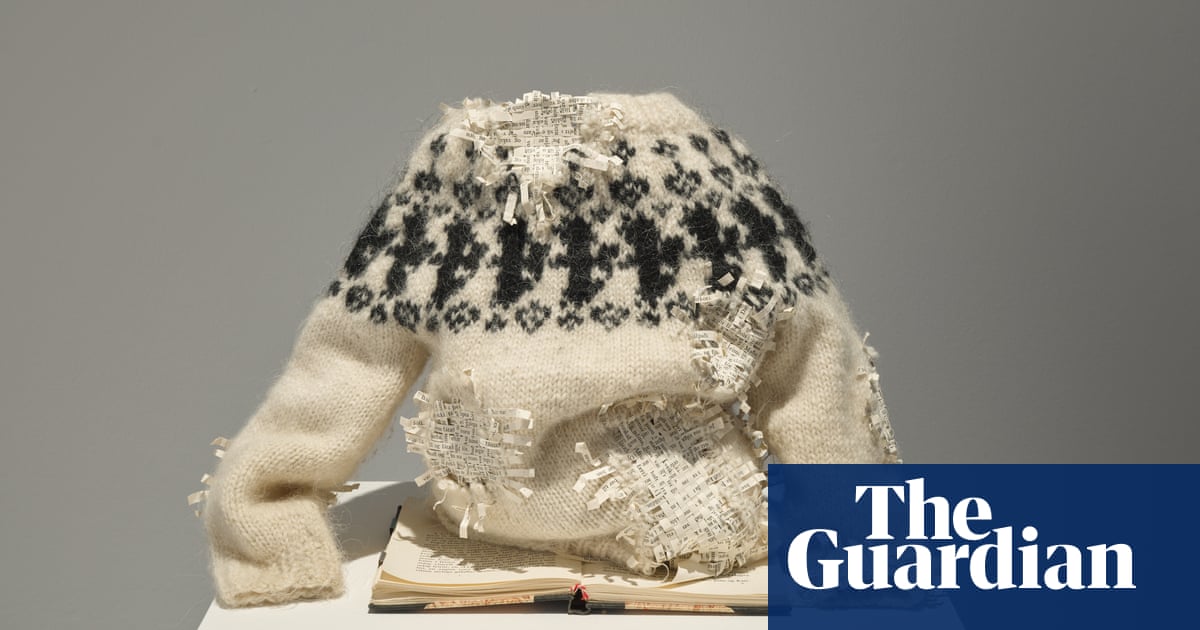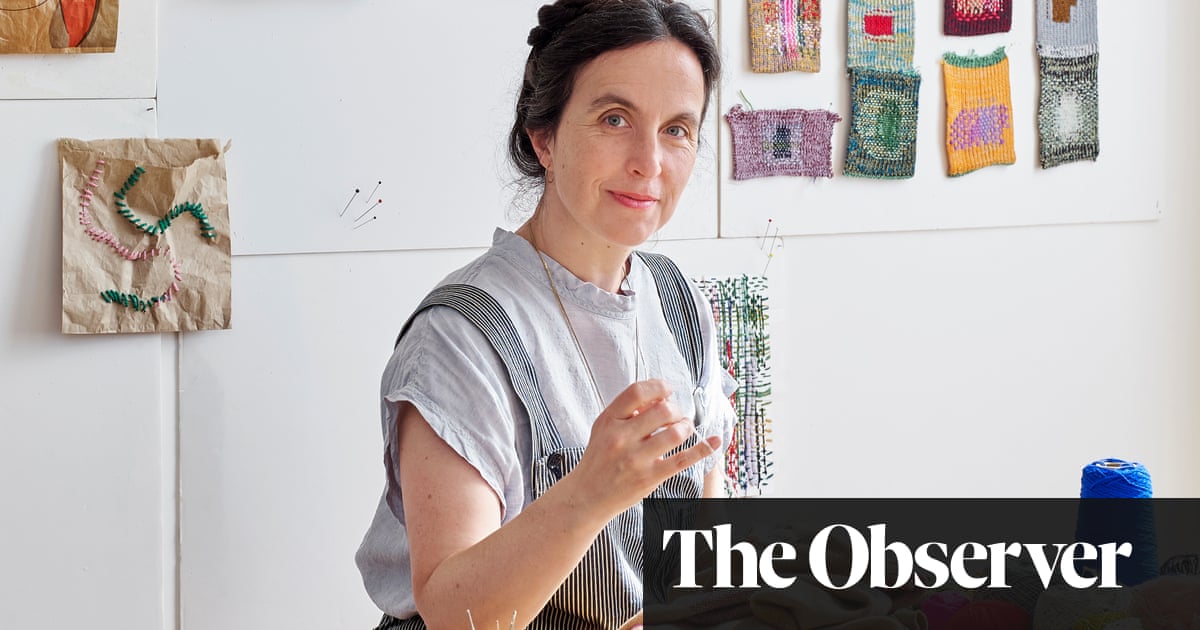
‘Mending lets you see things afresh’: Celia Pym, textile artist
Growing up in Kent in a house full of doers, menders and makers, the textile artist Celia Pym says, “Tool kits were readily available and there was a designated drawer for elastic bands and odd lengths of string that were saved for bodge fixes.” She learned to weave and knit as a child, a skill that later re-emerged when she was studying sculpture at Harvard University.
“I picked up knitting again when I was an undergraduate,” she recalls. “I used it as a way to help me get started in the studio in the morning – like a warm-up exercise. But then, I’d get to the end of the day and realise I’d spent my whole day knitting.” In her final year, she received a fellowship that enabled her to travel across Japan for nine months carrying her knitting with her in her backpack. Pym’s finished piece was exhibited at the Crafts Council in 2005. The curator was a tutor at the Royal College of Art who persuaded Pym to enrol on an MA in constructed textiles.
While she was studying, Pym’s great uncle, Roland, died. He was a painter who had lived with Celia in her childhood home along with her great-aunt, Elizabeth, who would become “a huge influence” on her making. When sorting through Roland’s belongings, Pym’s father found a chunky, hand-knitted sweater worn by Roland. “The clothes of people who have died are extremely compelling things,” says Pym. “They smell like the person; they’re the shape of the person and they are literally a sort of second skin that is left behind.”
Pym studied the cream sweater, which was riddled with holes. “I knew straight away that the holes in the forearms were caused by the way he used to sit in his chair, leaning forward on a drawing board.” The sweater reminded her of him; but there were signs of Elizabeth, too. “There was evidence of her practical repair work all over the sleeves… It reminded me in so many ways of the way she used to care for us. I was so attracted to that act of mending and how powerful and quiet it was, that I went straight to the library to look up mending.”
Pym’s visible repair work – which is sometimes, but not always carried out in vivid, contrasting colours – is now exhibited internationally. She collaborates with clothing brands, including Toast and Muji, and is commissioned by galleries and institutions to undertake public-facing repair events. When the right project presents itself, she also accepts one-off commissions. Seven pairs of long, hand-knitted socks are awaiting attention in her studio in northeast London. “I do mend things so people can wear them again,” she explains. “But sometimes the thing isn’t actually going to be worn again; they just don’t want to throw it away. Often, that’s when it ends up with me.”
Pym now teaches textiles at the Royal College of Art, where she hopes to change the perceived value of repaired goods. “There has to be a shift from craving the new all the time,” she says. “There has to be a shift to valuing things that have been lived in. That’s what mending is about, in a way. It’s about being able to see our belongings afresh and to imagine that they are still good – if not better – with the additional mend.” celiapym.com
‘I wanted a feeling of lived-in-ness’: Margaret Howell, clothes designer
The British designer Margaret Howell has been making clothes for over six decades. Her appreciation and pursuit of the well-crafted is longstanding. Howell recently rediscovered a linen dress she made for herself as a teen: “Actually, when I look at it now, I can see that even that was quite well made,” she says with characteristic understatement. “I suppose my aim has always been to make functional clothes, as well as I can.”
Content in their simplicity and fit for purpose, Howell’s practical designs are synonymous with quality and are worn by loyal customers almost as a uniform: “You do not wear them out – you wear them in,” the chef Margot Henderson has said of her designs.
Howell grew up in Surrey and studied fine art at Goldsmiths in London. She graduated in the late 1960s and began making men’s shirts from her flat in southeast London. “I loved heritage fabrics,” she recalls. “I loved the feel of good quality shirting, and I just had an intuitive sense that I wanted to make clothes that had the right sort of feel of lived-in-ness.”
Her shirts were picked up by the retail entrepreneur Joseph Ettedgui. “He said: ‘When you make a proper wardrobe for men, I’ll open a shop for you,’ which he did.” Howell’s first store opened on South Molton Street in London, in 1976, the year before the film Annie Hall was released. “Times were changing,” says Howell, whose designs have always leant towards androgyny, which she describes as “an equality of lifestyle. Soon, women came in and they wanted the clothes as well,” she says.
By the 1980s, Howell had an international following. Grace Coddington and Jack Nicholson were fans. (The corduroy jacket Nicholson wore in The Shining was made by Howell.) Stores opened in Manhattan, then Tokyo. The flagship on Wigmore Street, London, opened in 2002, alongside a curation of books, furniture and homeware. Today, her designs are sold worldwide with more than 100 outlets in Japan, 12 in Europe and an established online business. “I’m incredibly busy these days,” she says.
In the beginning, Howell’s designs looked to the past. (She cites the raincoat her father gardened in as an early source of inspiration.) Nowadays, her ideas might be informed by social documentary photography – “Images of real people wearing their clothes,” she says, simply. Other times, it might be someone she sees on the street: “A workman in his dungarees or overalls, that sort of thing.”
With this deliberate “unshowy-ness” comes a sense of permanence. These are designs that simply will not disappear. In fact, Howell’s archive is expanding of its own volition. “Sometimes we get clothes offered back for the archive, which is quite nice,” she says. “We put the customer’s name on them and they get a little voucher.” And so the cycle slowly continues. margarethowell.co.uk
‘I let the material do the talking’: Charlie Borrow, luggage maker
Charlie Borrow made his first bag 10 years ago for his mum’s birthday. “I knew she wanted an oversized leather tote,” he recalls. “At the time, I was 18 and working as a sales assistant, so obviously I couldn’t afford to buy her one. Instead, I went down to Brick Lane and picked up a couple of lamb hides for about £30 and made it myself. It was dreadful.”
Prior to that, Borrow had no experience of leatherwork or bag making. He had studied fashion and textiles before moving to London to begin a course in bespoke tailoring, but dropped out after six months. (“I’m not into theory; I’m way more about manufacturing, working with my hands, figuring things out.”) He took a job at Paul Smith in Covent Garden – a shop his father had introduced him to at a young age. Borrow’s parents were themselves makers and shopkeepers, so retail spaces had always appealed visually to Borrow.
Having made the tote for his mum, Borrow decided to make one for himself, too. He took it into work the next day and a colleague asked if he could have the same design in canvas. “I started to research cotton canvases and the idea just evolved from there, really.” Initially, Borrow set up a maker’s space in his room, which was “no bigger than a double bed”. Today, he runs a one-man workshop and retail space in east London, where he handmakes everything to order.
His succinct collection of bags, belts, wallets and pouches has altered very little in the decade since its inception. Inspired in part by functional, hard-wearing military wear (a Swiss ammunition pouch he found at a market; an old aviator’s kit bag), his designs are clean, minimal and durable with no visible brand name or logo. “The leather tote bag is incredibly simple,” he says. “It’s just one piece of leather folded in half with minimal stitching. It’s made from a really nice weight of leather that won’t stretch or break. It’s always about keeping the right proportions and letting the design and the material do the talking.”
Borrow’s materials are sourced exclusively from the UK. His leathers are from the only remaining traditional oak-bark tanner in the country – a company that has been in the same family for five generations. They use raw hides from abattoirs in the West Country and the entire process – which takes over a year – happens at the tannery. Brassware is sourced from an equestrian foundry in Walsall that uses the traditional sand-casting method to forge Borrow’s buckles, while the heavyweight cotton canvas is dyed and waterproofed at a specialist mill in Dundee.
The workshop is divided into a retail space, a work space with “lots of lovely old tools and machinery” on display and, delightfully, a little-known basement bar that serves locals classic cocktails and bottles of St John’s wine one night a week.
Lately, Borrow has branched out into refurbishing midcentury armchairs and accepting bespoke commissions for interior projects, causing customers to confuse the space with an antique shop or museum. “I like projects that force me to scratch my head, to figure out how to approach them in the best way possible. It’s very rare that someone will just buy something directly from the website,” he continues. “There’s usually some sort of consultation and I always encourage people to ask if they would like a laptop pocket inside their bag, or if they want a handle slightly longer because it can make a massive difference to the day-to-day use of the product. That’s what matters.” charlieborrow.com
‘The clothes take on your identity’: Faye Toogood, designer
“I once literally wrote the word ‘outsider’ in massive letters on the wall in my studio,” Faye Toogood recalls. “Because I have felt outside the design industry, outside the art industry, outside the fashion industry. I have never felt accepted as part of any of them, but actually, I am part of them all.”
As a workaround, Toogood now describes herself as a “tinker” – a job title that evokes the busy image of someone mending, improving and discovering. It is this spirit of playful curiosity that defines Studio Toogood, a multidisciplinary practice that encompasses interior design, homewares, fine art and fashion.
Toogood studied art history at Bristol University and was the interiors editor at The World of Interiors for eight years before founding her eponymous studio in 2008. Though her degree and role at the magazine immersed her in “the beauty and stories of the past”, her studio is dedicated to the relentless pursuit of something new. That search has produced genre-defying designs, such as her sculptural and squat Roly-Poly chair, which turns 10 this year.
In 2013, Toogood began working with her pattern-cutter sister, Erica. Inspired by Irving Penn’s book, Small Trades, the sisters designed a collection of eight coats. “We wanted to dress artists, designers, architects – people who wanted a uniform, but not a pastiche of workwear. That was something we were very passionate about: we weren’t going to take old workwear and just tweak it; we wanted to create completely new patterns.”
Their first collection was made from artists’ canvas in seven sizes, enabling “everyone and anyone, irrespective of age, gender or size” to wear their clothes the way they wanted. A giant label was stitched into each garment bearing the names of each individual maker and the name(s) of each owner – the idea being that the piece is handed down and/or around between friends and family. “There was an intention behind what we were doing, both in the shape-making and in the longevity of each piece,” Toogood says.
In 2014, they took their designs to Paris fashion week. “We just had the most incredible response,” she says. “We had requests for trousers, shirts, dresses… Suddenly, we began designing outfits not just for the photographer but for the draughtsman, the acrobat, the road sweeper, the oil rigger…”
The material and making of each item is rigorously researched and Toogood readily acknowledges that this level of thought comes at a cost. “But we don’t want you to have your whole wardrobe filled with Toogood,” she reasons. “You don’t need 10 pieces: just one piece – one amazing coat – will, I think, transform not only your wardrobe, but also the way you feel about how you dress. It’s never been our intention to dictate how you put your outfit together,” she says. “We’re not asking you to take on our identity. We want each piece to become part of the wearer’s identity. That’s what I find so fascinating and liberating.” t-o-o-g-o-o-d.com.





